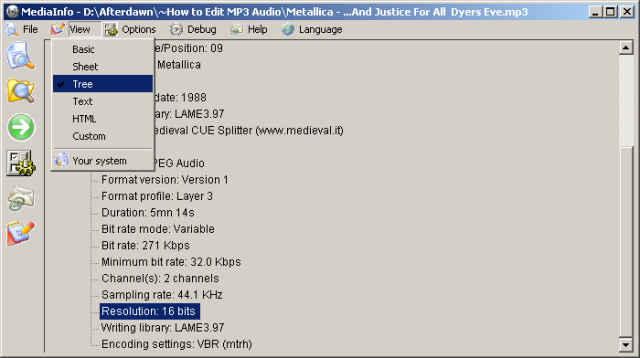| How to Edit MP3 Audio | You are viewing Page 1 of 4 -- Go to page 1 , 2 , 3 , 4 |
How to Edit MP3 Audio

Over the last decade the MP3 audio format has become a standard for everything from music downloads to video files and mobile phone ringtones. Regardless of what you use MP3 for you'll eventually find yourself needing to do some basic editing. You may need to strip the audio from a video file, join a pair of songs to keep them together during shuffle playback, or saving a small part of a file to make a ringtone for your mobile phone.
Fortunately each of these operations is simpler than you might think, and this guide will give you step by step instructions for each.
Lossless Editing
Since MP3 is a lossy compression format, meaning some information (quality) is lost during encoding, it's important to avoid decoding and re-encoding MP3 files unnecessarily. This guide focuses on lossless editing. That means no re-encoding will be involved so no additional quality will be lost.
Guide Format
Since different software will be used in each section of this guide, the software for each section will be listed individually. For example, you'll find instructions below that require MediaInfo so information on downloading it is included. On the next page you'll find a download link for VirtualDubMod because it's used for demuxing MP3 audio from a video file.
Before Editing Your MP3
Before you start editing your MP3 files you may need to find out more information about them. For example, if you're joining 2 files you'll need to make sure they have the same sample frequency and number of channels. My preferred tool for this is MediaInfo, although many different programs can do the job.
Required Software | |
 |
MediaInfoMediaInfo can report the properties of an MP3 file, including bitrate, samplerate and the number of channels. It can also read the ID3 tags which generally contain artist and album information about songs. |
Using MediaInfo
 |
I prefer to use the Tree view because it lists Resolution. Although this is typically 16 bits (like in the example), newer formats like Blu-ray may use 24 bit samples. For more primitive applications like mobile phone ringtones a lower resolution, or bit depth, may be used. Sometimes as low as 8 bits. Notice the Sampling rate of 44.1kHz. This means 44,100 samples per second, which is standard for CD Audio, VCD, or SVCD. For DVD and most DTV (ATSC, DVB, or QAM) it's normally 48kHz or 48,000 samples per second. For specialty uses like ringtones it may be significantly lower. It's a stereo file so there are 2 channels.
Continued On Page 2Next we'll talk about editing MP3 audio streams found in video files. Page 2 - Demuxing MP3 Audio From Video Files | |
| How to Edit MP3 Audio | You are viewing Page 1 of 4 -- Go to page 1 , 2 , 3 , 4 |
Written by: Rich Fiscus

